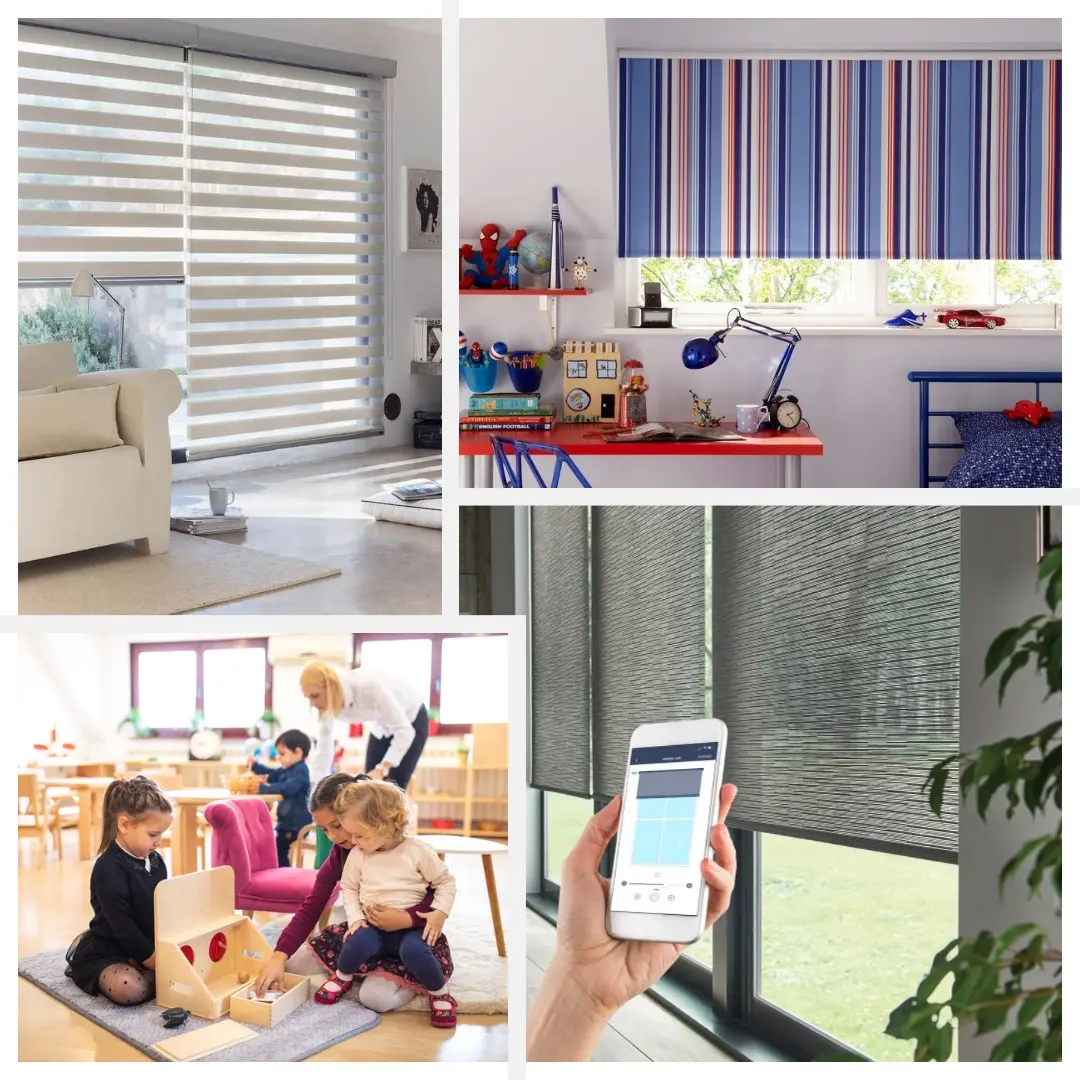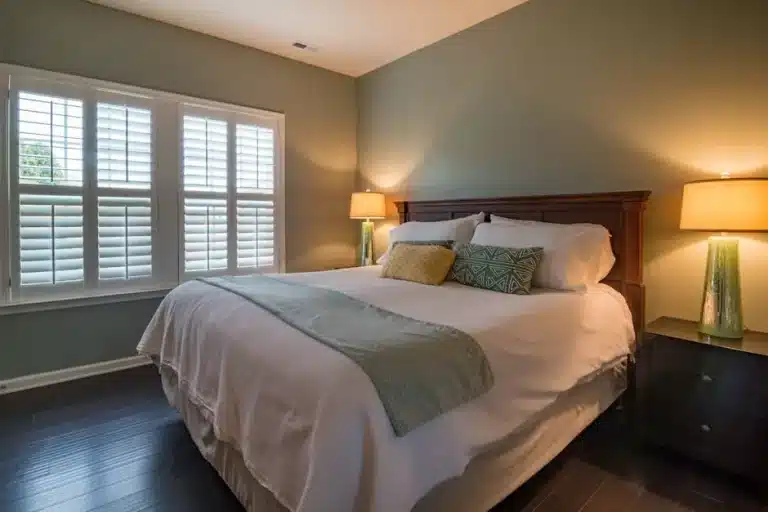Introduction to home blinds
Home blinds are an essential part of interior design and have a big impact on the overall look of a room. They not only provide privacy and control over natural light but also contribute to the aesthetics of your living space. There are various types of home blinds available, each with its unique features and benefits. Additionally, blinds come in a variety of materials, styles, and colors to suit different preferences and interior decor. Understanding the benefits of different home blinds styles can help you make an informed decision when choosing blinds for your home.
Types of home blinds
There are several types of blinds that you can choose from for your home. Through the understanding of the various styles, you can select the most suitable option for your needs. The most common types of home blinds include:
- Venetian blinds: These are horizontal slats that can be tilted to control light and privacy.
- Vertical blinds: Consisting of vertical slats, these are perfect for covering large windows or sliding doors.
- Roller blinds: These are made of a single piece of fabric that can be rolled up or down to cover the window.
- Roman blinds: These are made of fabric that folds when raised, offering a softer look compared to other blind types.
Each type of blind has its unique benefits, and considering your specific requirements can help you choose the right one for your home.
Benefits of different home blinds styles
Different home blind styles offer various benefits to enhance your living space. Here are some advantages of different home blind styles:
-
Light Control: Venetian and vertical blinds provide easy adjustment for controlling natural light entering your home.
-
Privacy: Cellular shades and roller blinds offer excellent privacy options, keeping your home life secluded from prying eyes.
-
Energy Efficiency: Honeycomb or cellular blinds can help insulate your home, reducing energy costs by retaining heat in winter and cool air in summer.
-
Aesthetic Appeal: Roman and sheer blinds add a touch of elegance and softness to your windows, enhancing the overall look of your home.
Understanding the benefits of different blind styles can help you choose the right option for your specific needs and preferences.
Privacy and light control
Blinds provide an effective way to control the amount of light that enters a room. You can adjust them to allow more or less light in, based on your preference. Additionally, they offer privacy by preventing people from seeing inside your home from the outside. This is especially beneficial for rooms that face the street or those adjacent to neighboring houses.
Energy efficiency
When it comes to energy efficiency, the right blinds can make a significant difference. Here are a few benefits to consider:
-
Insulation: Blinds can help to keep the heat in during the winter and the heat out during the summer, reducing the need for excess heating or cooling.
-
Light Control: By adjusting the blinds, you can manage the amount of sunlight that enters your home, reducing the need for artificial lighting during the day.
-
UV Protection: Certain blinds block harmful UV rays, protecting your furniture, flooring, and artwork from fading over time.
Keep these benefits in mind when choosing blinds for your home, and consider how they can contribute to your energy efficiency goals.
Aesthetic appeal and decor
When choosing home blinds, it’s essential to consider their aesthetic appeal and how they fit into your decor. Blinds come in various styles, colors, and materials, allowing you to find the perfect match for your home’s aesthetic. Whether you prefer a modern, minimalistic look or a cozy, traditional feel, there are blind options available to complement your decor. Additionally, the right blinds can enhance the overall visual appeal of your living space, making it more inviting and attractive.
Durability and maintenance
Blinds are generally durable and easy to maintain. However, the specific durability and maintenance requirements can vary depending on the material of the blinds. Here are some key points to keep in mind:
- Wooden blinds are durable and can last for many years if properly maintained. They may require occasional dusting and cleaning to preserve their appearance.
- Faux wood blinds are often more resistant to moisture and warping, making them a durable option for humid environments. Regular dusting and occasional cleaning can help maintain their longevity.
- Fabric or vinyl blinds are easy to clean and maintain, making them suitable for high-traffic areas or homes with pets or children. Regular cleaning can help preserve their appearance and extend their lifespan.
Overall, the durability and maintenance of your blinds can be influenced by their material and the level of care you provide.
Considerations when choosing home blinds
Before purchasing home blinds, it’s essential to consider various factors to ensure that you choose the best option for your needs. Some important considerations when choosing home blinds include:
-
Light Control: Think about the amount of light you want to allow into the room. Do you prefer total darkness, or do you want some natural light to filter through?
-
Privacy: Consider the level of privacy you require in each room. Some rooms may need more privacy than others, so choose blinds that can provide the desired level of privacy.
-
Style and Design: Take into account the style and design of your overall interior decor. The blinds should complement the existing aesthetic and enhance the overall look of the room.
-
Maintenance: Consider the level of maintenance required for each type of blind. Some options may be easier to clean and maintain than others.
-
Budget: Set a budget for your blind purchase and explore options that fit within your budget while meeting your requirements.
By considering these factors, you can make a more informed decision when choosing the right blinds for your home.
Installation and cost
When considering home blinds, it is important to factor in the cost of installation as well as the cost of the blinds themselves. Installation costs may vary depending on the type of blinds and the complexity of the installation. It is recommended to seek professional installation to ensure proper fitting and functionality. Additionally, the cost of the blinds will depend on factors such as the material, size, and style. Wood blinds are typically more expensive than vinyl or aluminum blinds, and custom sizes may also incur additional costs. It is advised to compare prices and installation options from different sources to find the best fit for your budget and style preferences.
Conclusion and summary
In conclusion, understanding the benefits of different home blind styles allows you to make an informed decision based on your specific needs and preferences. Whether you prioritize privacy, light control, or aesthetic appeal, there is a blind style that can meet your requirements. Keep in mind that the material, color, and mechanism of the blinds also play a significant role in their overall effectiveness. By considering all these factors, you can find the perfect home blind style that enhances the functionality and visual appeal of your living space.







